Results 5,801 to 5,810 of 12096
Thread: Anandtech News
-
03-08-16, 01:46 AM #5801
Anandtech: NVIDIA Releases 364.47 WHQL Game Ready Driver
Not even a week has passed and we have another driver update from NVIDIA. Despite the quick turnaround this is not a rushed released. Indeed, we have some heavy hitters found in a good number of fixes, a relatively large number of game ready updates, and even official Vulkan support.
This driver update introduces the 364 driver branch and NVIDIA has issued several bug fixes this time around. Among them including a crash in Assassin’s Creed Syndicate when ShadowPlay is enabled, a system hang during installation, crashing in Adobe Illustrator CC 2015, and a problem with the Twitch broadcast game title not matching Twitch’s game library. With all these fixes though, it is important to note that some users are reporting this driver update crashing their systems. Due to this issue a clean install is recommended even more so than it usually is.
Meanwhile for game-specific updates, this driver brings performance and compatibility updates to Tom Clancy’s The Division, Hitman, Need for Speed, Ashes of the Singularity, and Rise of the Tomb Raider. Alongside the list game ready updates NVIDIA has provided SLI profiles for Hitman, The Technomancer, and Zui Shong Bing Qi (Ultimate Weapon).
Lastly, but possibly the biggest news of this update is that with the switch to a new driver branch, Vulkan support has moved out of beta and is now in NVIDIA's mainstream drivers. We looked at Vulkan just last month as implemented in The Talos Principle, and though it's merely proof of concept at this point, it represents significant progress in Vulkan development. However while we're talking about API support, this latest driver branch still doesn't have DirectX 12 support for NVIDIA's Fermi architectre, though as we've seen it working in developer drivers it should still be on its way.
Anyone interested can download the updated drivers through GeForce Experience or on the NVIDIA driver download page.
More...
-
03-08-16, 07:15 AM #5802
Anandtech: AMD To Showcase Latest Innovations at “Capsaicin” Press Event & Webcast
Capsaicin, whether you call it the essence of flavor or the distillation of pain (ed: it's the latter), at its core capsaicin is what drives everything we call spicy. Using this as their inspiration AMD's Radeon Technologies Group will be holding a press event for GDC, and they are naming said event after this terrifically terrifying substance.
The press event, which we will be present for, will also be getting a live webcast that will be available on AMD’s investor relations page next week on Monday March 14th, at 4:00 PM PT. After concluding the event a replay will be available to watch a few hours later, along with YouTube access as well.
At the event RTG plans on showcasing their own hardware, software, and gaming partners. As Capsaicin is the reason for that fire that inspires dishes worldwide, RTG will explore what they call the “inner essence” of the GPU and how it powers innovations that we will see in gaming and VR. Along these lines RTG plans to show the latest advancements drive both the enthusiast and developer communities as we approach a growing virtual reality market.
Meanwhile, that AMD is broadcasting a webcast should be considered significant. Due to Security and Exchange Commission rules, AMD is required to reveal certain types of information to investors at the same time as the press. In previous instances where AMD has announced a webcast via their investor relations site, there have been new product announcements. So it is reasonable to expect the same here.
For more information, please see the Capsaicin webcast announcement page.
More...
-
03-08-16, 08:13 AM #5803
Anandtech: The Samsung Galaxy S7 & S7 Edge Review, Part 1
For some time now, Samsung has been the dominant player in the Android space, especially at the high end of the market. From the Galaxy S2 onwards, Samsung has been able to ride the wave of the smartphone industry’s growth without much disruption. Samsung has also shown a pretty impressive ability to adapt to changes in the market as seen by their dramatic departure in materials from the Galaxy S5 generation to the Galaxy S6 generation. While the Galaxy S6 was ultimately one of the best phones you could get that year, at least a few design decisions like the loss of removable battery and microSD slot were generally considered to be a step back relative to previous devices.
Throughout their reign of dominance Samsung has always been able to stay on top, however their competition is never too far behind. To that end, it’s probably obvious now that the Galaxy S7 family represents an attempt to improve on the Galaxy S6’s perceived faults, while building upon its perceived strengths.
More...
-
03-09-16, 05:33 AM #5804
Anandtech: Seagate Announces PCIe x16 SSD Capable Of 10GB/s
At the Open Compute Project Summit this week in San Jose, Seagate will show off a pair of upcoming enterprise NVMe SSDs with impressive throughput specifications. The drives will have PCIe x16 and x8 interfaces and provide maximum throughput of 10GB/s and 6.7GB/s respectively. Seagate has provided few details so far, but it's safe to say those numbers are peak sequential read speeds.
The big question is what controllers are used in these drives. Most NVMe SSD controllers support at most 4 PCIe lanes, with the notable exceptions being PMC-Sierra's 8-lane controllers. Seagate does have an internal development team with SandForce, but it's highly unlikely they've been able to develop such a large controller so soon. And these new Seagate SSDs are probably not based on unannounced third-party controllers.
This means the 16-lane SSD from Seagate is almost certainly a multi-controller solution with an on-board PCIe switch, which is now common for top of the line enterprise PCIe SSDs. A 10GB/s read speed suggests that the 16-lane drive is most likely based on four of Seagate's Nytro XM1440 M.2 SSDs, which advertise 2.5GB/s read speed for capacities of at least 800GB and use a Marvell controller. Seagate's blog shows CAD renderings that seem consistent with a layout of four Nytro XM1440 M.2 drives on one card, but the requisite PCIe switch chip isn't shown.
Seagate claims that the 10GB/s speed of the 16-lane drive is 4GB/s faster than any competing drive. If Seagate's new drive is a single-controller solution then that's a fair comparison and an impressive accomplishment, but there are already multi-drive products on the market offering RAID0 speeds well in excess of 6GB/s. HP's Z Turbo Drive Quad Pro is a PCIe x16 card that provides connectivity and cooling for up to four M.2 PCIe SSDs. When ordered as part of a workstation it can be configured with four Samsung SM951 SSDs to provide an advertised 9GB/s sequential read speed, though when sold separately it only comes populated with two M.2 SSDs.
Meanwhile the 8-lane drive is probably not based on two 4-lane controllers, despite it being the most obvious solution. Most products based on a single controller from Intel, Samsung, Marvell or Phison with a PCIe 3.0 x4 link advertise maximum read speeds of 2.2–2.8GB/s, so providing 6.7GB/s from just two controllers would require 20% higher performance than any PCIe 3.0 x4 NVMe controller has attained. Instead, the PCIe x8 SSD Seagate is announcing is probably another four Marvell controller design that is limited in sequential speeds by the overhead of the drive's PCIe switch and the upstream PCIe link. The 1M IOPS claimed for the 8-lane drive is slightly higher than four times the rating for a single XM1440, but some capacities of the 2.5" XF1440 offer enough IOPS. The thermal constraints of the M.2 form factor compared to 2.5" drives and add-in cards with large heatsinks account for the discrepancy in IOPS rating. According to Seagate the 8-lane drive will offer some cost and power savings over the 16-lane drive, and it's not hard to imagine that it could also allow servers to a larger total capacity for the same number of PCIe lanes.
Seagate's blog shows a rendering of the 8-lane card with the same heatsink layout as their Nytro XP series flash accelerator cards that use a RAID of SandForce SATA controllers to provide up to 4GB/s sequential read speeds. There's a good chance this is just a placeholder illustration, as Seagate says the 8-lane drive is still being finalized.
Both drives are intended for the Open Compute Project (OCP) hardware ecosystem founded by Facebook and now also supported by a variety of major companies in cloud computing, telecom, networking, and finance. The Open Compute Project focuses on datacenter hardware and infrastructure, with members contributing specifications and designs that are more detailed than industry standards like the ATX form factor. Seagate says their new drives will comply with OCP specifications, but the specific standards haven't been identified. Potentially relevant standards include a specification for thermal monitoring of PCIe add-in cards and a specification for M.2 SSDs that sets standards for things like minimum performance, the conditions under which thermal throttling is permitted, maximum power consumption and mandatory eDrive encryption support.
Based on the assumption that both drives are rougly equivalent to four Nytro XM1440 drives plus a PCIe switch chip, peak power consumption will probably be at least 29W for the 8-lane drive and could be nearly 40W for the 16-lane drive.
Seagate describes the PCIe x16 drive as production-ready but the 8-lane drive is still being finalized. Samples of each have been made available to Seagate's customers and the full product launch is planned for summer of 2016. Capacities have not been announced but are likely to start at 3.2TB or 3.84TB for the highest-performing models.
More...
-
03-09-16, 08:08 AM #5805
Anandtech: An AnandTech Round Table with ASUS: 10 Years of the Republic of Gamers
Earlier this year before CES 2016, we approached ASUS with an idea: as the Republic of Gamers brand is now in its 10th year of operation, we wanted to get together and discuss the feeling and utility of ROG a decade on, record it, have a question and answer session from our readers, and publish the video. The Republic of Gamers brand from ASUS has been difficult to ignore, both from an engineering perspective when it comes to motherboards and graphics cards, but also the origin story, integration with users, and the expansion out to many different product lines. I felt it was important to hear from the source, and see what makes the mind tick of some of the integral cogs behind the ROG experience.
For long time AnandTech readers, you will know that very few people in this industry stay in one position – in recent times, Dustin has moved to Corsair, Vivek now works with Razer, and Anand works at Apple. I started as Senior Motherboard Editor back in 2011, when my predecessor Rajinder Gill took a position within ASUS’ technical team. His predecessor, Gary Key, is also with ASUS and currently sits as Director of Marketing for ASUS USA.
At the time when Gary, Raja and Kris Boughton (another former motherboard editor for AnandTech) were probing the original models, Vivian was one of their direct ASUS contacts, ensuring that direct line of communication and filling them in on the details. Then when Gary joined ASUS, Raja had Gary as his main contact, and so on, meaning that for this discussion we have the ASUS-AnandTech contact line right from the initial ROG launch.Vivian Lien
Chief Marketing Officer, ASUS USA
ASUS Marketing
from 2006/2007Gary Key
Director of Marketing, ASUS USA
AnandTech Motherboard Senior Editor 2005-2008Rajinder 'Raja' Gill
Technical PR Manager, ASUS USA
AnandTech Motherboard Senior Editor 2008-2010Ian Cutress
10 Years of ROG Round Table Chair
Current AnandTech Motherboard Senior Editor from 2011
Between the AnandTech motherboard reviewing staff, we have covered the Republic of Gamers brand from its inception, with both Gary and Raja now involved in various levels with members of the team that designs, develops, tests and pushes the ROG ecosystem, then managing the perception of it as part of the ASUS brand within North America.
If we look back at AnandTech’s content history, the deep dives from both Gary and Raja into those products are still insights into motherboard design and complexity. They are certainly worth a read several years on, along with Kris Boughton’s reviews, who worked alongside Gary in 07/08. For those interested, here’s every ROG motherboard we’ve ever tested:
07-2007: ASUS ROG at Computex – Gary Key
11-2007: Maximus Formula Review – Rajinder Gill
12-2007: Maximus Extreme Review – Rajinder Gill
01-2008: Rampage Formula Review – Kris Boughton
03-2008: Striker II Formula Review – Rajinder Gill
04-2008: Striker II Extreme Review – Kris Boughton
10-2008: Rampage II Extreme Review – Gary Key
11-2009: Maximus III Formula Review – Rajinder Gill
04-2010: Maximus III Extreme Review – Rajinder Gill
07-2010: Rampage III Extreme Review – Rajinder Gill
04-2012: Crosshair V Formula Review – Ian Cutress
08-2012: Rampage IV Gene, Formula and Extreme Review – Ian Cutress
03-2013: Maximus V Formula Review – Ian Cutress
05-2013: Maximus V Gene Review – Ian Cutress
11-2013: Maximus VI Impact Review – Ian Cutress
01-2014: Rampage IV Black Edition Review – Ian Cutress
12-2014: Maximus VII Impact Review – Ian Cutress
06-2015: Rampage V Extreme Review – Ian Cutress
12-2015: Maximus VIII Impact Review – Ian Cutress
You may remember we interviewed Dr Albert Chang, Senior Division Director of ASUS Motherboard Business Unit Research and Development back in 2014 about the general path for motherboard design, and how the ROG team is designed to be that skunkworks element of engineering. Raja assists ROG’s internal impromptu extreme overclocking events with top overclockers as well as community management, so we picked his brains on how design ideas from the forums and events assist product design.
As a result of the ASUS ROG push, we end up meeting with ASUS frequently at events (much like other companies), but a round table was a great chance to get a decade of AnandTech Senior Motherboard Editors in front of the camera with Vivien Lien, the CMO of ASUS USA who was part of the team that supplied the first set of ROG motherboards we tested to AnandTech. We also posted an open Q&A pipeline, inviting questions from readers. I took the best part of a dozen of those questions for the round table.
Audio only download: MP3
Timestamps HH:MM
00:06 – Intro
02:50 – Starting with the Rampage Extreme
04:20 – How to begin a gaming focused brand
05:55 – Several years for ROG profitability, the changing nature of Gaming
07:25 – Engineering and Overclocking
09:50 – The X79 motherboard that was never sold, but helped future platforms
13:30 – Evolution of the OC Panel
14:45 – Custom hardware development and implementation
16:15 – Republic of Gamers in 2006/07: Teething Issues
18:35 – ASUS sends an engineer to Gary’s house to fix it
19:45 – Translating an issue, that needs an ASUS engineer to fix, into feedback for the future
22:13 – ROG Forums and ASUS’ official presence on other major forums for support/feedback
23:25 – Start of Q&A
24:00 – Q1 from zodiacfml: Make an ASUS ROG Smartphone!
25:35 – Q2 from jjj: What makes ROG worth the cost?
31:50 – Q3 from jasonelmore: Is $500 too much for a Z170 motherboard?
34:05 – Q4 from 7amood: Any future plans for waterproofing?
34:45 – Q5 from dreamer77dd: Will we see a dual socket ROG platform?
36:03 – Q6 from boeush: Will ASUS compete with MSI’s GT80?
37:35 – Q7 from boeush: Is there demand for larger laptops (18”+) or 16:10 screens?
38:55 – Q8 from iamkyle: Will we see customizable NICs/codecs?
41:45 – Q9 from Ian: Is there 10GBase-T on the brain?
43:46 – Q10 from Shadow7037932: How does ASUS evolve when an i7 920 still offers good performance?
45:40 – Outro
46:02 – FIN
More...
-
03-09-16, 07:38 PM #5806
Anandtech: OWC Introduces SSD Upgrade for MacBook Pro and MacBook Air PCIe SSDs
Apple's Retina MacBook Pro and all but the earliest MacBook Air models have relied solely on SSDs for internal storage, as Apple slimmed down the designs to the point that even a 1.8" hard drive was too bulky. Rather than adopt the mSATA or later M.2 form factor, Apple's SSDs have used custom form factors and pinouts. This has contributed to keeping the market for third-party upgrades very small. Only a few companies have produced SSDs in Apple-specific form factors, most notably Other World Computing (OWC) and Transcend. Transcend has generally used Silicon Motion controllers while OWC has used SandForce controllers, but until now their offerings have been limited to SATA-based SSDs.
Apple migrated their notebook SSDs to PCIe-based interfaces in 2013 and has been using drives supplied by Toshiba, SanDisk, and Samsung. OWC has finally devised a compatible replacement and released it as part of their Aura SSD product line. Like the Apple originals, the OWC Aura PCIe SSD uses the AHCI protocol; Apple so far only supports and uses NVMe on the Retina MacBook that doesn't have a removable SSD. The requirement to use AHCI instead of NVMe limited OWC's choices for SSD controller. While Apple is a big enough customer to convince Samsung to make the SM951 in a custom form factor, OWC is not. Marvell has shipped several AHCI-compatible PCIe SSD controllers, but their typical business model is to sell just the controller and leave it up to the customer to write their own firmware or license from a third party, either of which is a substantial up-front expense.
In order to keep costs under control, OWC has opted to not use a native PCIe SSD controller. Instead, the PCIe Aura SSD uses a Marvell 9230 SATA RAID controller and a pair of Silicon Motion SM2256 SATA SSD controllers. The Marvell 9230 has a PCIe 2.0 x2 host interface, so the PCIe Aura SSD has the potential to outperform SATA SSDs but won't be able to approach the peak transfer rates of the recent Samsung SM951-based Apple originals. The Silicon Motion SM2256 controllers mean the PCIe Aura SSD is almost certainly using TLC flash, which is less expensive but also performs worse and draws more power than MLC flash. The PCIe Aura SSD's RAID design unfortunately does not support passing through TRIM commands nor retrieving SMART information from the individual SSD controllers.
Based on OWC's measurements of the first PCIe SSDs Apple used back in 2013, the Aura SSD's peak performance is slightly better than the slowest 128GB SanDisk/Marvell drive, but without TRIM the Aura's write performance advantage could easily disappear over time. That leaves the PCIe Aura SSD with capacity as its only strong selling point. The MacBook Air can be configured with up to 512GB of storage from Apple, but the Aura SSD can provide up to 960GB. Many Apple customers are put off by the steep price of build-to-order SSD upgrades: $200 to upgrade from 128GB to 256GB, another $300 to move up to 512GB, and another $500 to move up to 1TB for the MacBook Pro. At $347.99 for 480GB and $597.99 for 960GB, OWC's Aura manages to be both much cheaper than Apple's SSD upgrades and much more expensive than single-controller drives with a standard form factor.OWC Aura PCIe SSDs 480GB 1TB Usable Capacity 480GB 960GB Controllers Marvell 9230 + 2x SM2256 Interface Apple custom PCIe x4 @ PCIe 2.0 x2 Peak Read Speed 763 MB/s Peak Write Speed 446 MB/s TRIM support No Price (drive only) $347.99 $597.99 Price (upgrade kit) $399.00 $649.00 Warranty 3 years
The Aura SSD is sold either as a bare drive or an upgrade kit that includes the necessary screwdrivers to install the SSD and a USB 3.0 enclosure to facilitate data migration. The drive is expected to start shipping in late March.
More...
-
03-09-16, 11:37 PM #5807
Anandtech: AMD Releases Radeon Software Crimson Edition 16.3 Hotfix: Support for Vulk
With the driver update floodgates not closing yet, we are given a massive update from AMD that brings Radeon Software Crimson Edition to version 16.3 (driver version 16.15). Incoming this week is a good list of bug fixes, a large list of new features which include a couple of surprises, and some performance numbers to let us know how these cards have been improving.
On the list of resolved issues, AMD has fixed an issue with cards not sustaining steady clock speeds, which had been leading to choppy performance. AMD also fixed a random crash in Rise of the Tomb Raider caused on launch of the game when Tessellation is enabled. And possibly most interesting of the fixes is the Ashes of the Singularity 2.0 Benchmark now supports DirectFlip, the absence of which limited AMD's ability to allow screen tearing for lower latency in that game.
More significantly, a large number of features have been added to the driver and Radeon Settings application this time around. First is official support for Vulkan which AMD notes will bring the driver to Vulkan 1.0 compliance. Support has also been added for Per-Game Display Scaling. Which can be handy for those instances where a monitor or laptop may not always scale a game to fill the screen while not running at native resolution.
In a new technology announcement, 16.3 adds support for what AMD calls XConnect technology. XConnect appears to be AMD's trademark name for supporting external Thunderbolt 3 GPU enclosures with Radeon R9 300 series GPUs, and includes supporting GPU plug’n’play. However AMD also notes that the base system will need to have BIOS support to connect to an external GPU, which implies that XConnect won't work with any and every TB3-equipped system.
Finally, AMD also posted a list of performance numbers:?
- Rise of the Tomb Raider™(2)
- ?Up to 16% on AMD Radeon™ R9 Fury X Series vs AMD Radeon™ Software Crimson Edition 16.2.
- ?Gears of War Ultimate Edition(3)
- Up to 60% on AMD Radeon™ R9 Fury X series vs AMD Radeon™ Software Crimson Edition 16.2.1
- Up to 44% on AMD Radeon™ R9 380 series vs AMD Radeon™ Software Crimson Edition 16.2.1
While initially these are some stellar performance improvements, AMD states that the Tomb Raider numbers were tested at 1080p, while Gears of War Ultimate Edition was running at UHD (4K). These nubmers also came from two different machines running different CPUs. Performance improvements are always good but internal validation has to be taken with a grain of salt, and a list this size can only give a small piece of the picture.
As always, those interested in reading more or installing the updated hotfix drivers for AMD’s desktop, mobile, and integrated GPUs can find them either under the driver update section in Radeon Settings or on AMDs Radeon Software Crimson Edition download page.
More...
- Rise of the Tomb Raider™(2)
-
03-10-16, 07:18 AM #5808
Anandtech: Hands-On With the Android N Developer Beta: Multi-Window & More
Yesterday Google surprised a number of people by launching the developer beta of the next release of Android, which is codenamed Android N. Normally the beta version of Android comes to developers during Google IO, but in a way it makes sense for Google to release it to developers a few months earlier so they can receive feedback and discuss common questions and concerns during the event. Read on for my early impressions of the latest version of Android.
More...
-
03-10-16, 09:12 AM #5809
Anandtech: More on AMD’s XConnect Tech: Thunderbolt 3 for External Radeons
Last night AMD issued a driver update that brought support for a new technology, XConnect. In a nutshell, XConnect is AMD’s trade name for running external video cards via Thunderbolt 3, a long awaited development that Thunderbolt owner Intel is finally getting behind and allowing. AMD’s driver release notes offered a handful of details, and now the official embargo for the tech is lifting, so we can fill in some of the blanks.
As our more observant readers may recall, when Intel unveiled Thunderbolt 3 back in June, they announced that they would finally be approving external video cards via Thunderbolt, and that they would be partnering with AMD to develop the initial implementation. More recently, at CES 2016 Razer unveiled the Razer Blade Stealth ultrabook, which was being immediately promoted as supporting external video cards, and was being shown off with its accompanying full power Core external video card chassis. Add the two up, and you can guess where this is going.
Today then is the formal launch of AMD’s Thunderbolt 3 video card efforts, which they are branding XConnect. The first drivers for XConnect were released last night, and now AMD is qualifying the Blade Stealth as the first laptop ready for XConnect. That said, it should be noted that while the Blade Stealth has been shipping for some time, Razer’s accompanying Core chassis has yet to ship, so anyone looking to try out XConnect will need to wait to get their hands on a Core.
Along with today’s formal unveiling of the technology, AMD is also laying out the technical requirements for supporting XConnect. Not just any laptop/desktop with Thunderbolt 3 can support an external GPU, as there are specific hardware and software requirements, which is why the Blade Stealth is the first qualified laptop. In particular, laptops need to support what is being called the Thunderbolt 3 external graphics standard, or eGFX for short. The eGFX standard in turn requires that vendors implement the necessary extensions for external graphics into their BIOS, including functionality necessary to support plug ‘n play operation. Also required is v.16 (or later) of the Thunderbolt firmware, Windows 10, and an active (not passive) Thunderbolt cable for bandwidth reasons.
With all of the necessary parts in play, from a technical perspective what we’re looking at is a somewhat more complex AMD Enduro switchable graphics setup, except with an external GPU. XConnect allows for an external video card to feed either a laptop’s internal display via the normal switchable graphics protocols, or an external monitor hooked up to the external video card. I dare say that much of this is mundane in 2016 as switchable graphics have been with us for some number of years now, and Intel has told us as far back as June that what has really changed their tune was that there is finally a sensible GPU hotplugging solution in place, allowing video cards to be added and removed without rebooting. This makes it much easier to use an eGFX solution – hence AMD’s focus on plug ‘n play functionality – and it means the operating system won’t crash and burn if an external video card is removed. Though from AMD’s whitepaper it’s clear that applications using the external GPU will likely crash, which is why external video cards still should be ejected for best results.
On the software side then AMD has gone ahead and implemented just this. The XConnect functionality in the latest Radeon drivers includes a system tray icon that that tells the user what applications are running on an external GPU, and can force close them if necessary to allow the GPU to be ejected/removed.
On the hardware side of matters, AMD is treating this as a high-end solution, and given the costs involved in Thunderbolt 3 I expect this will be the case universally. The company has qualified most of their high end graphics cards, including the R9 280, R9 290 series (sans 295X2), the R9 300 series, R9 Nano, and R9 Fury, while Fury X is excluded since its radiator won’t work with the Razor Core. Also supported are the mobile derivatives of these GPUs – for use in lower-power “graphics dock” devices – and future Polaris dGPUs will be supported as well. Overall from the GPU perspective Thunderbolt is just a higher latency PCIe 3.0 x4 connection, so it affords a lot of compatibility.
Meanwhile from a performance perspective AMD isn’t publishing specific numbers on how an external video card performs relative to an internal one, but PCIe 3.0 x4 testing is easy enough to do. With only one-quarter the bandwidth of a full PCIe 3.0 x16 slot Thunderbolt 3 will be constraining at times, but various benchmarks have put the average performance hit for a high-end card at under 10%. That of course will vary from game to game, as games that push a lot of data to the GPU or games that frequently interact with the GPU (e.g. retrieving physics simulation results) will be more greatly impacted by the reduced bandwidth and higher latency than simpler, more straightforward games.XConnect GPU Compatibility List Radeon R9 Fury Radeon R9 Nano Radeon R9 300 Series Radeon R9 290 & 290X Radeon R9 280 Mobile dGPUs Based on the Above Planned: Polaris dGPUs
From a broader perspective, the launch of Razer’s Blade Stealth laptop and Core chassis are part of what AMD hopes will be a much larger ecosystem for eGFX-capable laptops and enclosures. While each end needs to be certified, the fact that the transport layer is standardized Thunderbolt 3 means that any chassis should work with any laptop, and future solutions need not be a matching setup ala the Blade Stealth + Core. To that end Thunderbolt eGFX is not the first external graphics solution, but as a standard it has the potential to be more widespread than previous proprietary solutions such as MSI’s Shadow expansion dock or AMD’s own previous XGP initiative, not to mention it’s not tied to any one GPU vendor.
The catch, I suspect, will be getting laptop vendors to include Thunderbolt 3 support, as historically Thunderbolt has seen little traction outside of Apple laptops. The switch from the mini-Displayport connector to the USB Type-C connector is likely to help some with that, but a big consideration will be the space and power requirements of Intel’s Alpine Ridge controller, along with the costs of buying and integrating it.
As for the eGFX chassis, the Razer Core is a solid example of what to expect with high-end designs, which is a Thunderbolt dock on steroids. Along with providing enough power and space for a double-wide 375W video card, it also contains a Gigabit Ethernet port hanging off of the Thunderbolt controller’s PCIe lanes, USB 3.0 ports that are (presumably) coming off of the Alpine Ridge controller itself, and the ability to charge the Blade Stealth laptop. Back at IDF Intel was also pitching the idea for a smaller “graphics dock” concept, which would have a lower-power mobile-class dGPU integrated into a docking device that provided similar I/O functionality, to allow for a cheaper all-in-one device that provided a more modest boost to graphics performance.
Overall, gaming has been one of the few bright spots in an otherwise sluggish PC industry, and that goes for both gaming desktops and gaming laptops. For AMD and Intel, the launch of Thunderbolt eGFX/XConnect in turn allows them to further expand the gaming laptop market, moving beyond desktop replacement class laptops and more limited 15” laptops by offering desktop-class GPU performance to any laptop that incorporates a Thunderbolt 3 port and the necessary BIOS support. At the same time Ultrabooks themselves have been a steady and well received market, though making poor gaming devices due to a lack of space for a dGPU – never mind something that offers desktop-like performance. So after earlier efforts to pair them up with external graphics with any luck this will be the start of a viable gaming Ultrabook market as well.
More...
-
03-10-16, 12:00 PM #5810
Anandtech: Intel Updates True Key App to Simplify Security
Intel Security, a wholly owned subsidiary of Intel (and previously known as McAfee) has updated its True Key password manager application to tackle one of the most notorious issues with password managers: inability to reset the forgotten master password. The new version of the app allows resetting the master password using other methods of authorization. The updated version will simplify managing of passwords and will further help Intel in its quest to “eliminate” passwords in general.
Since computing is getting increasingly mobile, security of personal devices is getting increasingly more important. As a major developer of PC platforms, Intel has created a number of sophisticated technologies that can improve security of computing devices. For example, Intel’s latest processors support AES-NI instructions that speed up encryption and decryption using the advanced encryption standard (AES). In addition, select Intel’s platforms also support TXT (trusted execution technology) and TPM (trusted platform module) cryptoprocessors for enhanced security. While strong passwords and AES 256-bit encryption can generally help to make mobile gadgets more or less secure, it is not easy to remember many strong passwords consisting of letters and numbers. Meanwhile, if you use only one password and it leaks, your security fails completely. It does not matter how sophisticated are encryption or security technologies, they get useless the moment when passwords are compromised.
To make platform security technologies less vulnerable to human factor, Intel and some other companies want to eliminate passwords and replace them with more robust methods of authentication, such as fingerprints, retina scan or facial recognition. In fact, thanks to technologies like Apple Touch ID and Microsoft Windows Biometric Framework, usage of biometric authentication mechanisms instead of passwords as well as password managers to store passwords for applications that do not support biometric authentication is increasing.
Companies like IBM/Lenovo have offered password management for years with their ThinkVantage software, a proprietary program that only worked on their PCs. By contrast, Intel Security’s True Key password management application can work on various platforms; it is compatible with a variety of apps and can use different methods of authentication, including fingerprints, face, master password, trusted device, email and so on. For example, the True Key can use Intel’s RealSense cameras to recognize a face for Windows logon as well as third-party fingerprint scanners (i.e., Apple’s Touch ID). The Intel True Key always uses at least two factors to identify a person, which generally enhances protection, AES 256-bit encryption as well as Intel identity protection technology (IPT) where available.
Since all biometric technologies are vulnerable to spoofing to some degree, True Key app allows biometric authentication only from the user’s own pre-selected trusted devices. Biometric templates for server-based facial recognition authentication (mathematical descriptions of biometric measurements) are stored on the True Key servers in encrypted form and are protected by a hardware security module (HSM). It should be noted that facial recognition is performed either completely in a server-based mode, or both on the user’s device and on the True Key servers.
Meanwhile, the master password is not stored on True Key servers or locally on any device. It is used to generate the so-called key encryption key (KEK) as well as the authentication token (AT) using a large number of rounds of PBKDF2 with HMAC-SHA512 key derivation function with random salt values. The KEK is used to encrypt users’ passwords and wallet assets. The AT is used is used as one of the factors required to authenticate the user on the True Key servers.
The multi-factor authentication and the rather sophisticated master password make it very hard for perpetrators to access the data (simply because it takes too lot of codes to crack using brute force — even if someone manages to get the master password or crack KEK and AT, they will also have to crack another method of authorization). Whenever the master password is changed, the True Key re-encrypts all data both locally and on servers. What is very important for many users is that Intel’s latest version of the True Key can reset even the master password by verifying other unique factors like owner’s face and/or fingerprint via a second device. So, even if you forget something, the application can relatively safely reset everything, which should simplify its usage for many people.
Intel’s True Key application supports Apple Mac OS X, Google Android and Microsoft Windows operating systems as well as Internet Explorer (Edge), Google Chrome and Mozilla Firefox browsers. Free version of the program supports up to 15 passwords, premium version can store up to 2000 logins and passwords for $19.99 a year.
More...
Thread Information
Users Browsing this Thread
There are currently 39 users browsing this thread. (0 members and 39 guests)






 Quote
Quote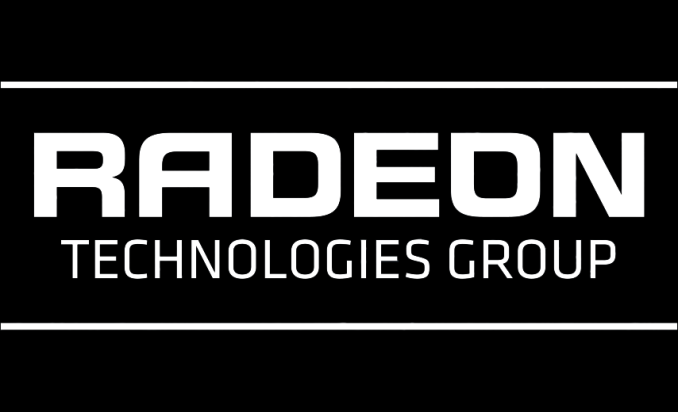


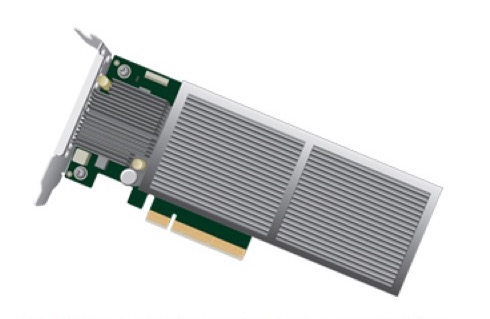






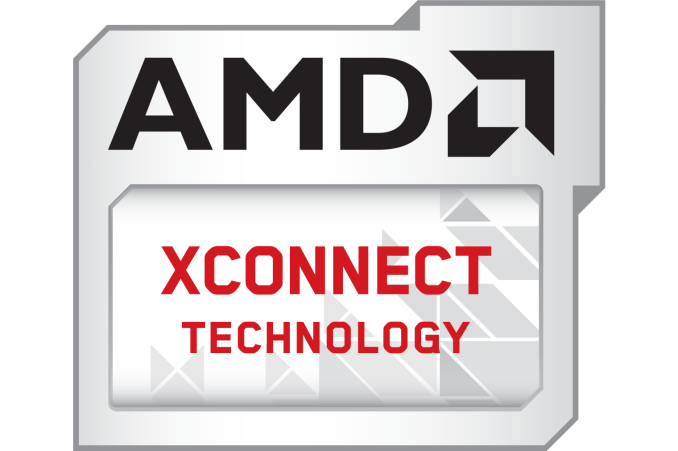

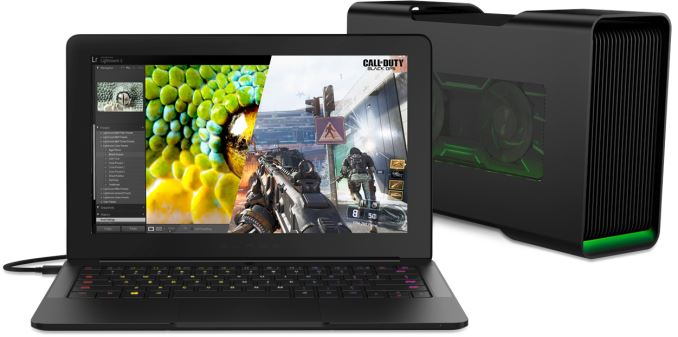
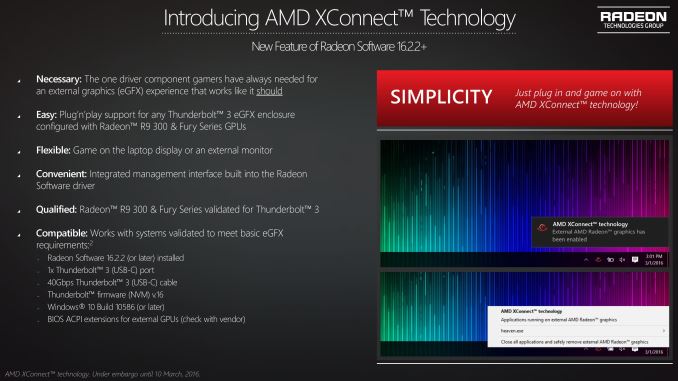
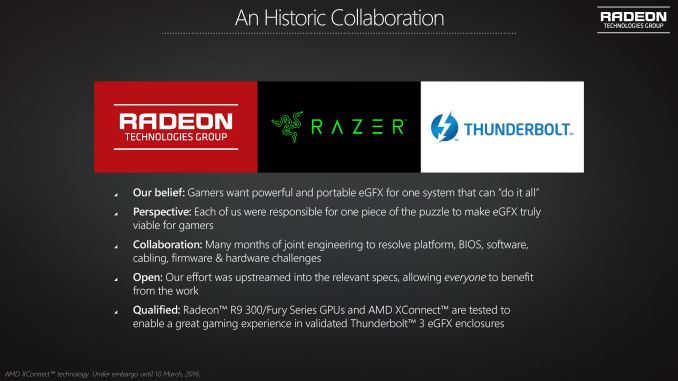
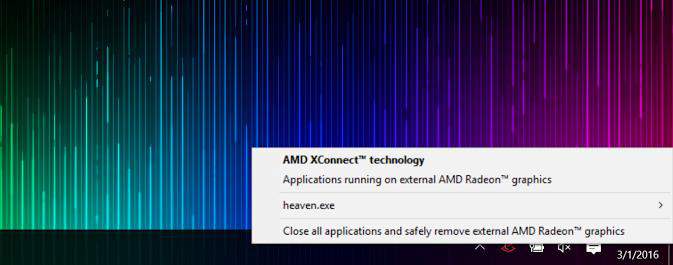

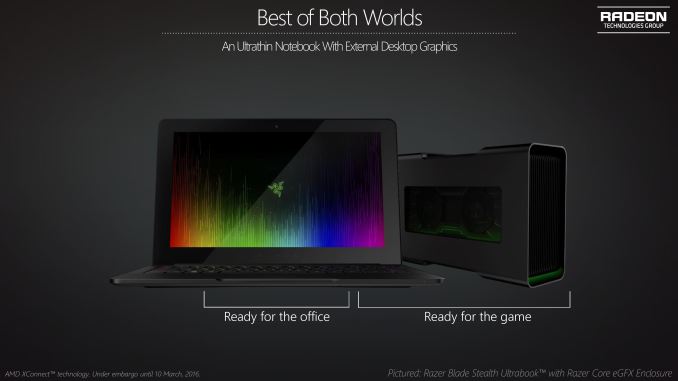








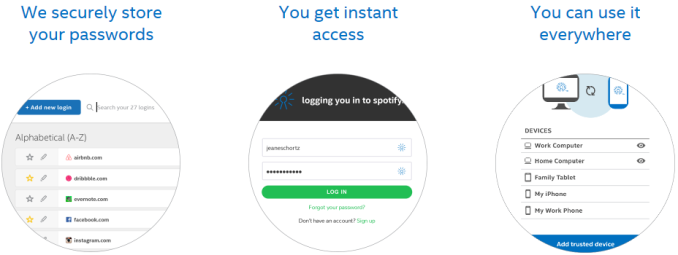
















Bookmarks